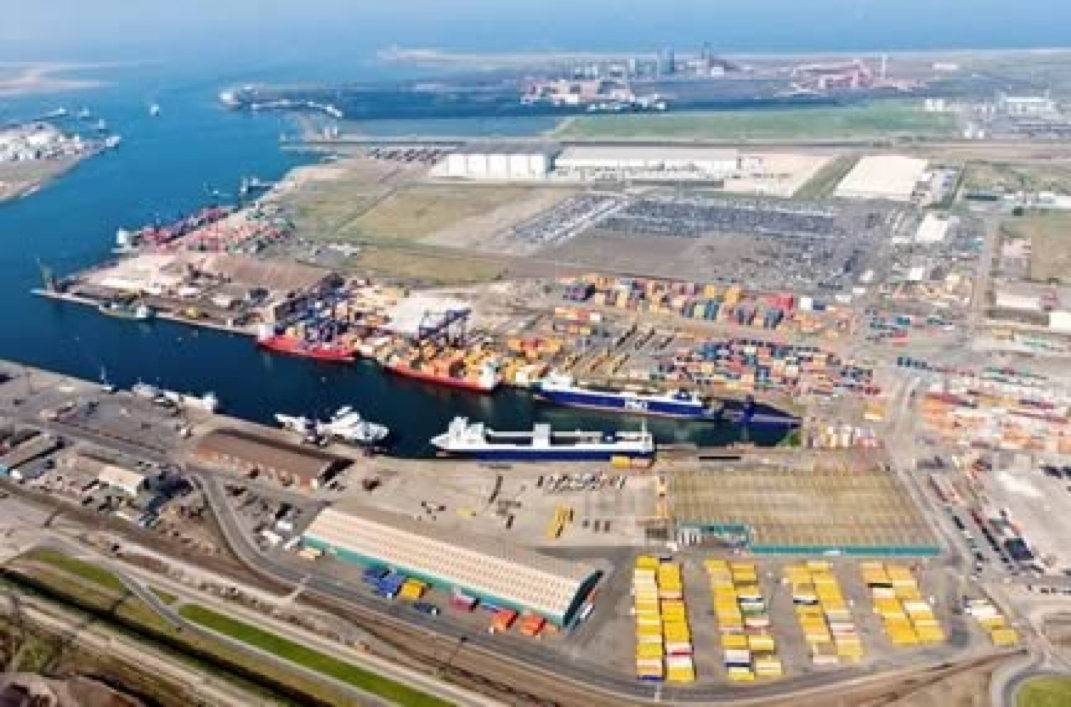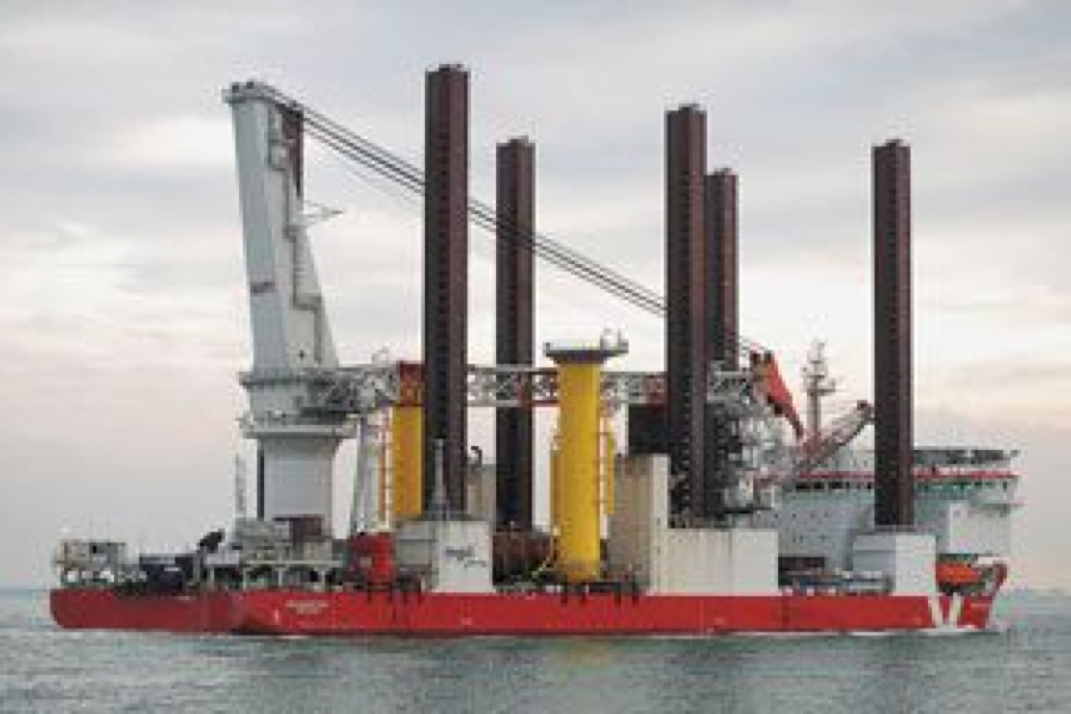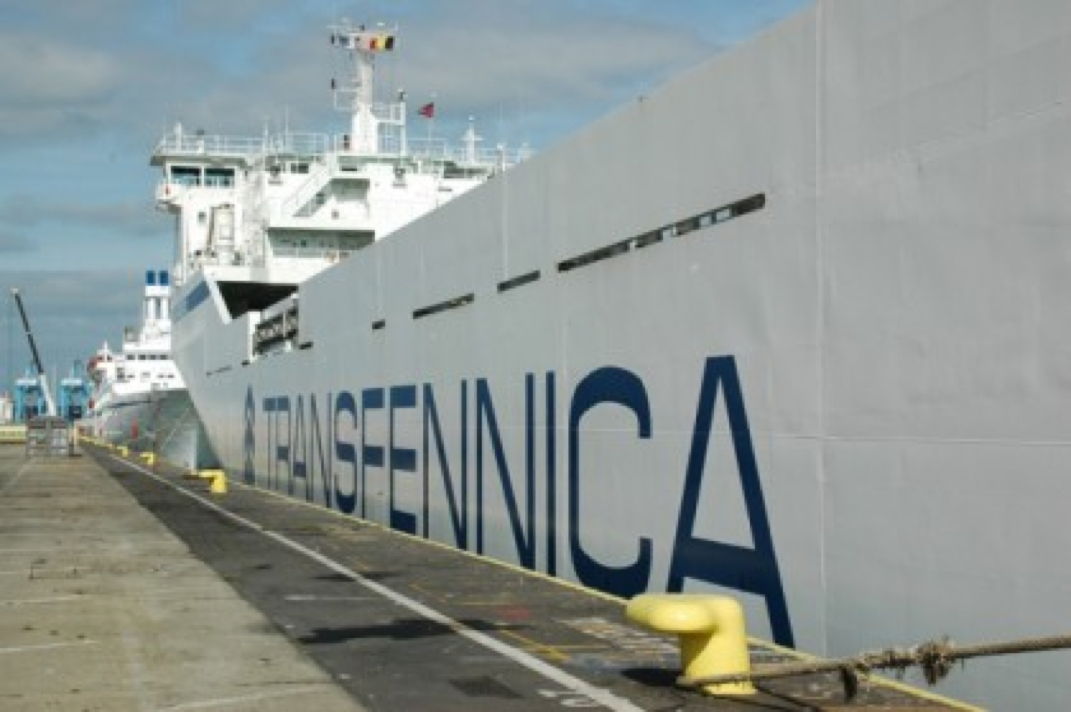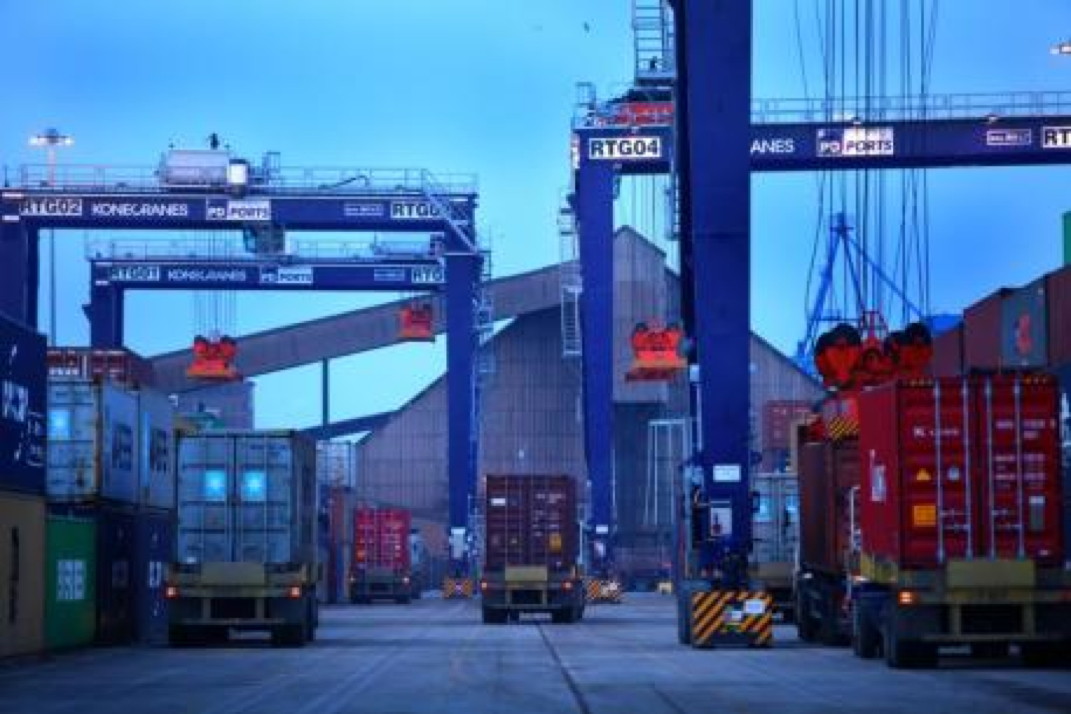Dock Master Saves Baby From Icy Waters
Last Updated 18:30 27/01/2013
A dock master has rescued a six-month-old baby after his buggy was blown into freezing cold waters by strong winds.
The infant, who was strapped in the buggy, was swept into the water as his mother walked along Watchet Harbour, Somerset, at 8am.
After hearing screams for help George Reeder, 63, initially thought a dog had fallen in but was horrified to see the pushchair upturned in the water.
He dived in and pulled the pushchair to the wall, before a member of the public helped attach a rope and hauled it to dry land - but not before the baby had spent around five minutes in the water.
The baby was revived by a passerby who administered CPR, before being taken to hospital, where he is believed to be out of intensive care.
Mr Reeder, who has worked at the marina for 11 years, said he heard screaming from a couple of hundred yards away before jumping on his bike to see what had happened.
He added: "I don't know exactly how he went in, but I was on the esplanade and heard the commotion and I assumed somebody's dog had gone into the water, so I went cycling over.
"They were on the West Pier, where you walk up to the lighthouse, some way away, but the noise travels and I could hear screaming from a woman.
"The mother was there and she said 'my baby has gone in the water', so I went to the edge and I could see the pushchair upside down, floating away.
"I just jumped in and pulled the pushchair back over to the edge of the quay, and then somebody put a rope down over and I tied it on and they lifted it out.
"As far as I know, what the police told me was that the wind blew the buggy in."
Mr Reeder said it was "amazing" that the baby survived, adding: "The baby was still in the pushchair, it was very cold, it is amazing really because he must have been in there for a good five minutes, under the water.
"They pulled up the pushchair and a lady started doing CPR, and then the coastguard came, and the ambulance and the police, so I backed out the way."
A local member of the coastguard took over the CPR from the woman and Mr Reeder said the baby started to take in breaths.
He said: "You could his little mouth opening and taking in a breath and that's when I thought it's ok, he's going to be ok.
"I know the family and the granddad came over and said he's out of intensive care now and on the ward.
"The poor mother, she'll probably never get over something like that, it's your worst nightmare."
A spokesman for Avon and Somerset Police said: "Police were called to the harbour in Watchet at 8.17am this morning to reports of a baby in the water.
"It is believed a gust of wind blew the buggy with the child in it into the water," he said.
"A local fisherman rescued the six month old boy and he was airlifted to hospital for treatment.
"The condition of the baby is believed to be no longer life-threatening."
Bunn is continuing its nearly 200-year legacy of agricultural service across the UK by adding PD Ports’ Teesport facility to its extensive production and distribution network. Teesport is less than a mile from the mouth of the River Tees, and offers 80,000 square feet of storage capacity that Bunn will utilise to supply the Scottish and north of England markets. The first shipment arrived on 11th January.Bunn’s selected Teesport as it offers increased distribution capabilities to the company’s existing network of eight terminals that are conveniently positioned within 100 miles of nearly all UK farmland.
With growing demand for enhanced efficiency fertilisers, the Teesport terminal will allow Bunn to supply Koch Advanced Nitrogen® fertiliser to a larger territory. The product, powered with AGROTAIN® nitrogen stabiliser, reduces the ammonia volatilisation of urea to maximise crop production as an alternative to ammonium nitrate.
UK – Freight vessels come in all shapes and configurations from containerships to LNG carriers and last week saw PD Ports welcome the world’s first purpose built wind turbine installation vessel into the Port of Hartlepool this being the first time the port operator has handled a vessel of such size at the dock. The MPI Adventure arrived at Hartlepool in late December to commence work on the Teesside Offshore Windfarm Project, for which the Port has been appointed as the main construction logistics hub.
The Teesside Offshore Windfarm Project, which is being developed by EDF Energy Renewables, requires the MPI Adventure to transport the 27 turbines, in particular the towers, Nacelles and blades, out to sea, some 1.5 kilometres off the shore of Redcar. This is expected to be completed in early spring, with over 100 people involved in the offshore construction programme operating out of the project supply base established at Hartlepool. Tim Bland, EDF Project Manager, said:
“We are pleased to welcome the MPI Adventure to the project. The vessel is much more weather tolerant than the vessel previously engaged for this work and we believe this offers the best opportunity to complete the build of the offshore Wind Turbines over the winter period.”
Peter Robinson, Managing Director at MPI Offshore Ltd., operators of the world's largest and most powerful wind turbine installation vessels, added that the company is delighted to be involved with this challenging project and are looking forward to completing the installation of the 27 wind turbines. Robinson continued by saying that MPI are proud to be part of the PD Ports and EDF Renewable Energy teams in bringing this offshore renewable energy facility to Teesside. Jerry Hopkinson, PD Ports’ Managing Director of bulks, ports and logistics,concluded:
“The arrival of the MPI Adventure highlights our capability to handle large, industry class offshore vessels at the Port of Hartlepool whilst further demonstrating our continued progression and growing strength in this sector.”
Photo: Ungainly or beautiful? The Adventure certainly stands out from the fleet.
Two of Europe’s ro-ro players hope to cut into the haulage sector’s market share and boost their revenues with an innovative ploy. P&O Ferries and Dutch ro-ro shipping line Transfennica have come together in a deal that might finally return some form of volume growth to the moribund north European ferry freight sector.
Yesterday saw the launch of a new alliance between the two companies, with Transfennica linking its Bilbao-Zeebrugge service to P&O’s services out of the Belgian port to Tilbury, Hull and Teesport, thereby creating a new ro-ro hub in northern Europe at Zeebrugge and attacking the driver-accompanied haulage market.
The deal centres on Transfennica moving from the berths it currently docks at in Zeebrugge to P&O’s two-berth facility, from where the two companies will be able to offer up to 40 sailings a week between Spain and the UK.
The companies are targeting the unaccompanied trailer sector, with hauliers able to book freight “through-tickets” as the two firms’ systems are EDI-linked, building on the moderate success that Transfennica’s Bilbao-Zeebrugge service had seen in attracting volumes away from the all-road route between Iberia and northern Europe.
P&O Ferries’ freight director Ronny Daelman said: “We have been closely watching the development of Transfennica’s service to and from Spain. As part of our strategy we are always looking for ways of expanding our portfolio of solutions to our clients. With pressure on road hauliers as it is today with the economic situation, fuel prices, the working time directive and congestion on expensive French motorways, this service is a perfect alternative to the road. We are confident that the market will welcome our co-operation.”
By linking the two operations, a trailer could move from Spain to the UK in around 50-60 hours, a P&O spokesman told The Loadstar.
“In terms of timing we think that is quite attractive, and already quite a lot of Transfennica’s traffic is UK-bound, so it makes sense to transfer much of it directly to our sailings – it exploits the strength of Zeebrugge as a hub,” he added.
A Philipino crew member aboard the Arklow Venture was involved in an incident yesterday whilst washing down the ship. The accident occured when they moved a bulk head causing 1 of the ships crew to fall 50 feet in to the hold. The man involved in the incident is suspected to have serious spinal injuries.
(More to follow.)
PD Ports welcomes the world's first purpose built wind turbine installation vessel into the Port of Hartlepool
11 January 2013
PD Ports has welcomed the world's first purpose built wind turbine installation vessel into the Port of Hartlepool. This is first time PD Ports has handled a vessel of this size at the Port of Hartlepool.
The MPI Adventure arrived at the Port in late December to commence work on the Teesside Offshore Windfarm Project, for which the Port of Hartlepool has been appointed as the main construction logistics hub.
Described as the 'next generation' of wind turbine installation vessels, the arrival of the MPI Adventure adds further credibility to PD Ports' ability to handle industry class vessels at Hartlepool, required for the size and scale of offshore wind projects.
The Teesside Offshore Windfarm Project, being developed by EDF Energy Renewables, requires the MPI Adventure to transport the 27 turbines, in particular the towers, Nacelles and blades, out to sea, some 1.5km off the shore of Redcar. This is expected to complete in early spring.
Over 100 people are involved in the offshore construction programme, operating out of the project supply base established at Hartlepool.
Jerry Hopkinson, PD Ports' managing director, bulks, ports and logistics, said: "The arrival of the MPI Adventure highlights our capability to handle large, industry class offshore vessels at the Port of Hartlepool whilst further demonstrating our continued progression and growing strength in this sector."
Peter Robinson, MD, MPI Offshore Ltd, said: "MPI is delighted to be involved with this challenging project and look forward to completing the installation of 27 wind turbines in a safe and timely manner.
"MPI is a locally based ship and construction management organisation seen as premier installer of offshore windfarms. We are proud to be part of the PD Ports and EDF Renewable Energy teams in bringing this offshore renewable energy facility to Teesside."
Tim Bland, EDF Project Manager, said "EDF are very pleased to welcome the MPI Adventure to the project. The vessel is much more weather tolerant than the vessel previously engaged for this work and we believe this offers the best opportunity to complete the build of the offshore Wind Turbines over the Winter period."
NEW SYSTEM: The container terminal at Teesport, Teesside.
A HIGH-TECH solution has been introduced at Teesport to in a bid to help improve speed, agility and efficiency.
PD Ports has invested in a new terminal operating system at the Teesside port as part of signifies the completion of its £16.7m upgrade of its container terminal facilities.
The system, which is is now fully operational, was provided by specialist terminal operating software development company Navis for Teesport’s container terminal.
The implementation of the new system included areas of wide span gantry crane operations and portcentric logistics activities.
Frans Calje, PD Ports’ managing director, said: “As with any new system, which alters the way we operate, identifying and applying the Navis technology was not without its challenges. The collaboration of the project team, as well as those using the system on a daily basis, has produced a successful result so far with the system now fully operational at the terminal.
“The new terminal operating system signifies a fundamental change in how we do business at Teesport and enables us to give improved service to customers whilst allowing us to better plan and coordinate our container activities.
“This is a world leading platform and will facilitate growth in our container business at Teesport for many years to come.
“Our portcentric operations will benefit from the new system due to the ability to plan further ahead and offer greater visibility for our customers.”
Concerned about the of the way things are being ran in your workplace? (Bullying, Harrasment, Health and Safety Issues, Working Hours etc.)
Are you airing your concerns but seem to banging your head against a brick wall? Or are you seeing things that are concerning you and daren't speak up. If so PD PORTS and BROOKFIELD run a whistle blowing policy. It's a free phone number.
We are asking our members to use this number so we can high light our issues in the workplace: - 0808-234-2210
(The actual Policy will be available on the website in the coming days.)
The best advice currently available regarding shift-work schedule design and the workplace environment is summarised below. These guidelines are general though and set out goals to aim for. They cover a wide range of factors that may or may not be relevant to your particular industry sector. Therefore it is necessary to use common sense when applying them. You will also need to balance the good practice guidelines with the operational concerns of your own business. [More detailed background information and explanation for these guidelines is provided in HSE’s priced publication Managing Shift Work: Health and Safety Guidance, HSE Books 2006 ISBN 0 7176 6197 0]
Applying the good practice guidelines, so far as it is reasonably practicable to do so, will help reduce the risk that workers are exposed to by shift working.
Good practice guidelines for shift design
Plan an appropriate and varied workload.
Offer a choice of permanent or rotating shifts and try to avoid permanent night shifts.
Either rotate shifts every 2-3 days or every 3-4 weeks - otherwise adopt forward rotating shifts.
Avoid early morning starts and try to fit shift times in with the availability of public transport.
Limit shifts to 12 h including overtime, or to 8 h if they are night shifts and/or the work is demanding, monotonous, dangerous and/or safety critical.
Encourage workers to take regular breaks and allow some choice as to when they are taken.
Consider the needs of vulnerable workers, such as young or aging workers and new and expectant mothers.
Limit consecutive work days to a maximum of 5 - 7 days and restrict long shifts, night shifts and early morning shifts to 2-3 consecutive shifts.
Allow 2 nights full sleep when switching from day to night shifts and vice versa.
Build regular free weekends into the shift schedule.
Good practice guidelines for the work environment
Provide similar facilities as those available during daytime and allow shift workers time for training and development.
Ensure temperature & lighting is appropriate and preferably adjustable.
Provide training and information on the risks of shift work and ensure supervisors and management can recognise problems.
Consider increasing supervision during periods of low alertness.
Control overtime, shift swapping and on-call duties and discourage workers from taking second jobs.
Set standards and allow time for communication at shift handovers.
Encourage interaction between workers and provide a means of contact for lone workers.
Encourage workers to tell their GPs that they are shift workers and provide free health assessments for night workers.
Ensure the workplace and surroundings are well lit, safe and secure.
Why is fatigue inportant.?
More than 3.5 million people are employed as shift workers in the UK. They work in a wide variety of industries including the emergency services, healthcare, the utilities, transport, manufacturing (including oil, gas & chemical industries), entertainment and retail. Poorly designed shift-working arrangements and long working hours that do not balance the demands of work with time for rest and recovery can result in fatigue, accidents, injuries and ill health.
Fatigue refers to the issues that arise from excessive working time or poorly designed shift patterns. It is generally considered to be a decline in mental and/or physical performance that results from prolonged exertion, sleep loss and/or disruption of the internal clock. It is also related to workload, in that workers are more easily fatigued if their work is machine-paced, complex or monotonous.
Fatigue results in slower reactions, reduced ability to process information, memory lapses, absent-mindedness, decreased awareness, lack of attention, underestimation of risk, reduced coordination etc. Fatigue can lead to errors and accidents, ill-health and injury, and reduced productivity. It is often a root cause of major accidents e.g. Herald of Free Enterprise, Chernobyl, Texas City, Clapham Junction, Challenger and Exxon Valdez.
Fatigue has also been implicated in 20% of accidents on major roads and is said to cost the UK £115 - £240 million per year in terms of work accidents alone.
Key principles in fatigue
Fatigue needs to be managed, like any other hazard.
It is important not to underestimate the risks of fatigue. For example, the incidence of accidents and injuries has been found to be higher on night shifts, after a succession of shifts, when shifts are long and when there are inadequate breaks.
The legal duty is on employers to manage risks from fatigue, irrespective of any individual’s willingness to work extra hours or preference for certain shift patterns for social reasons. Compliance with the Working Time Regulations alone is insufficient to manage the risks of fatigue.
Changes to working hours need to be risk assessed. The key considerations should be the principles contained in HSE’s guidance. Risk assessment may include the use of tools such as HSE’s ‘fatigue risk index’.
Employees should be consulted on working hours and shift patterns. However, note that employees may prefer certain shift patterns that are unhealthy and likely to cause fatigue.
Develop a policy that specifically addresses and sets limits on working hours, overtime and shift-swapping, and which guards against fatigue.
Implement the policy and make arrangements to monitor and enforce it. This may include developing a robust system of recording working hours, overtime, shift-swapping and on-call working.
Problems with overtime and shift-swapping may indicate inadequate resource allocation and staffing levels.
There are many different shift work-schedules and each schedule has different features. This sheer diversity of work and workplaces means that there is no single optimal shift system that suits everyone. However, a planned and systematic approach to assessing and managing the risks of shift work can improve the health and safety of workers.
There are a number of key risk factors in shift schedule design, which must be considered when assessing and managing the risks of shift work. These are the workload, the work activity, shift timing and duration, direction of rotation and the number and length of breaks during and between shifts. Other features of the workplace environment such as the physical environment, management issues and employee welfare can also contribute to the risks associated with shift work.
Sleep disturbances can lead to a ‘sleep debt’ and fatigue. Night workers are particularly at risk of fatigue because their day sleep is often lighter, shorter and more easily disturbed because of daytime noise and a natural reluctance to sleep during daylight.
Because of the above information we are desperately seaking members to become Unite Health & Safety reps. (To start taking charge of OUR working environment.)
Full training will be provided, see you workplace rep for more information.
|




 RSS Feed
RSS Feed